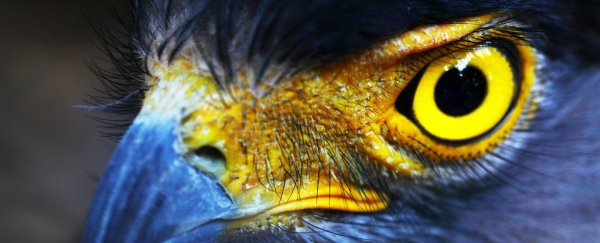When it was first proposed, the notion that animals can detect the Earth's magnetic field was ridiculed, but we now know that everything from birds and whales to butterflies, worms, and wolves know instinctively where north is thanks to an innate magnetic sense. How else are dogs supposed to find their preferred north-south pooping axis?
What scientists couldn't figure out was how they do it. Now, for the first time, a team in China has identified tiny clumps of protein that appear to align themselves with Earth's geomagnetic field lines like a compass, and it's thought that they can influence the nervous system to help animals navigate their surroundings.
Until now, the two most popular hypotheses used to explain animal magnetic sense were cryptochromes - proteins that respond to magnetic fields and are thought to play a role in maintaining the circadian rhythms of plants and animals - and iron-binding magnetite crystals, which are found in various organs and become magnetised when exposed to a magnetic field.
While promising, neither option was convincing enough on its own to fully explain the phenomenon, and scientists couldn't figure out how the two could possibly be linked. So a team from Peking University decided to investigate cryptochromes in the fruit fly genome to see if there was something they were missing.
Sure enough, they identified an iron-binding protein called MagR, which forms rod-like clumps with cryptochromes. It's thought that this MagR-cryptochrome cluster functions like a compass, responding to changes in the magnetic field and signalling nearby cells, which in turn prompt the nervous system to give the body cues about its whereabouts.
"The nanoscale biocompass has the tendency to align itself along geomagnetic field lines and to obtain navigation cues from a geomagnetic field," lead researcher Can Xie told Ian Sample at The Guardian. "We propose that any disturbance in this alignment may be captured by connected cellular machinery, which would channel information to the downstream neural system, forming the animal's magnetic sense."
These protein clusters aren't just found in fruit flies - the team found them in pigeons and monarch butterflies too, and when isolated, they behaved really, really strangely. "In the lab, the proteins snapped into alignment in response to a magnetic field. They were so strongly magnetic that they flew up and stuck to the researchers' tools, which contained iron. So the team had to use custom tools made of plastic," New Scientist reports.
Interestingly, further research found that these protein structures can also form in mole rat, minke whale, and even human cells, which offers up the possibility that we could have the same innate magnetic sense of other animals, but perhaps we're just not as attuned to it as they are.
"Human sense of direction is complicated," Xie told The Guardian. "However, I believe that magnetic sense plays a key role in explaining why some people have a good sense of direction."
It's still just a hypothesis - Xie and his team are yet to figure out exactly how the clusters communicate with other parts of the body to influence an animal's behaviour, but it's the best hypothesis we've got so far. The next step will be to observe how animals behave when the gene that codes for MagR is removed, which will prove if these clusters are indeed involved in the mechanism. If they are, and we can observe them working in humans, it's going to be mind-blowing.
The study has been published in Nature Materials.
